Hey, if rodents are wrecking your garden, don’t worry, I’ve got some solid tricks to share. Start with mesh barriers—use ones with ¼-inch openings, and bury them 6 inches deep to stop burrowing. These pesky critters can’t squeeze through or dig under that! There’s more to this battle, though, with natural repellents and clever traps to try. Stick with me for the full plan to protect your plants.
Contents
Installing Mesh Barriers
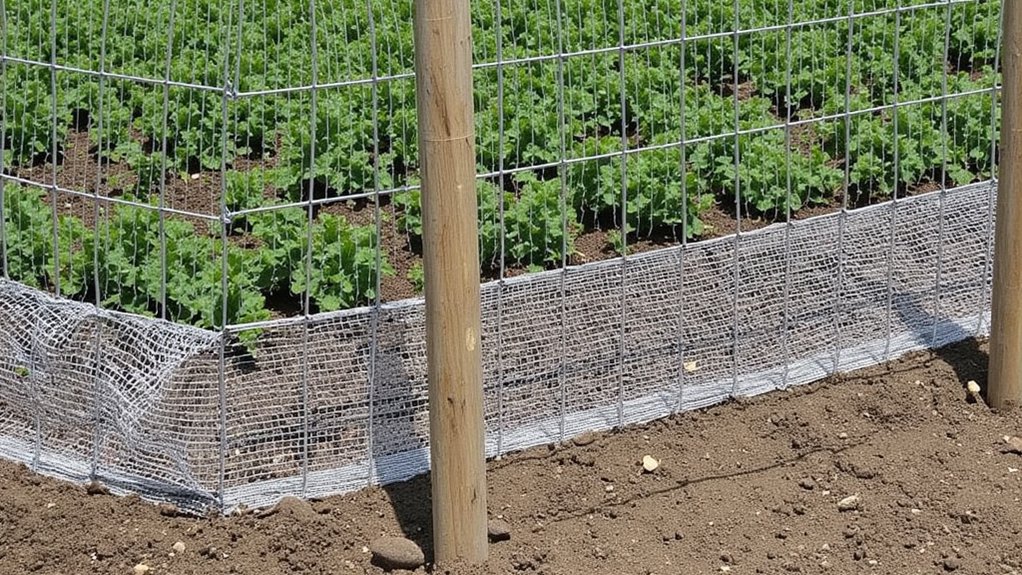
While rodents can be a real nuisance in your garden, installing mesh barriers is a solid way to keep them out. You’ve gotta act fast, though, before they munch everything. Grab some hardware cloth or wire mesh, ideally with openings no larger than ¼ inch, to block even the tiniest critters.
Start by measuring your garden’s perimeter, then cut the mesh to fit, leaving an extra 6 inches to bury underground. Dig a trench, about 6-12 inches deep, around your plot, and place the mesh in, securing it with stakes. Backfill the dirt tightly. Check it weekly for holes or gaps, fixing them pronto, so those sneaky rodents don’t slip through and ruin your hard work.
Using Peppermint Oil Repellent
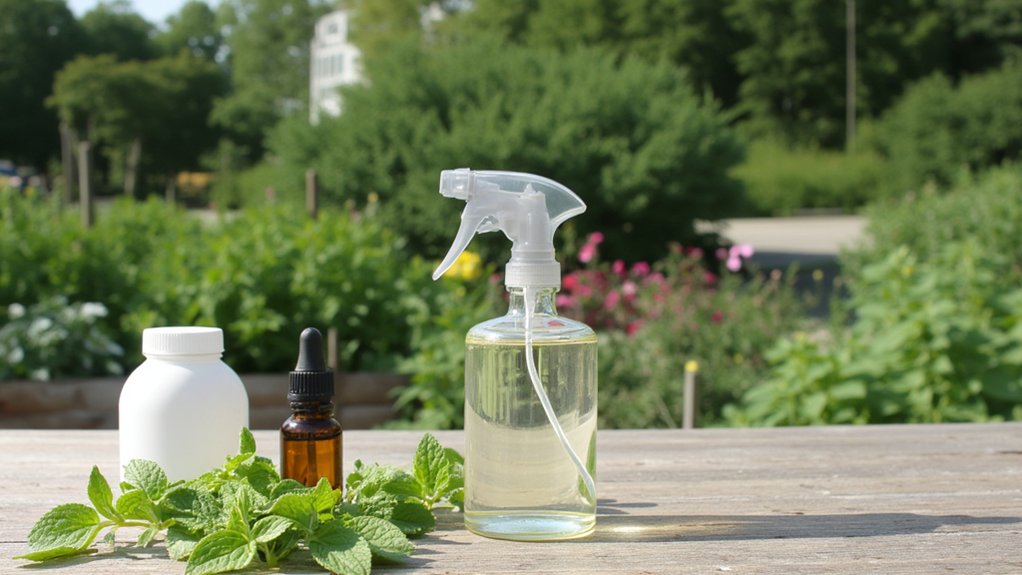
Hey, let’s switch gears and talk about using peppermint oil as a rodent repellent for your garden. It’s a natural, easy fix. Rodents hate the strong scent, so you’ve got a powerful tool here.
Start by grabbing pure peppermint essential oil, not the diluted stuff. Mix 10-15 drops with a cup of water in a spray bottle, shake it well, and you’re set. Spray this around your garden’s perimeter, focusing on entry points like gaps or burrows, every 3-4 days.
Don’t drench the plants, though; just mist lightly near the soil. Reapply after rain, as it washes away. This keeps rodents at bay without harsh chemicals. Stick with it, and you’ll notice fewer unwanted guests sneaking around.
Planting Garlic Bulbs
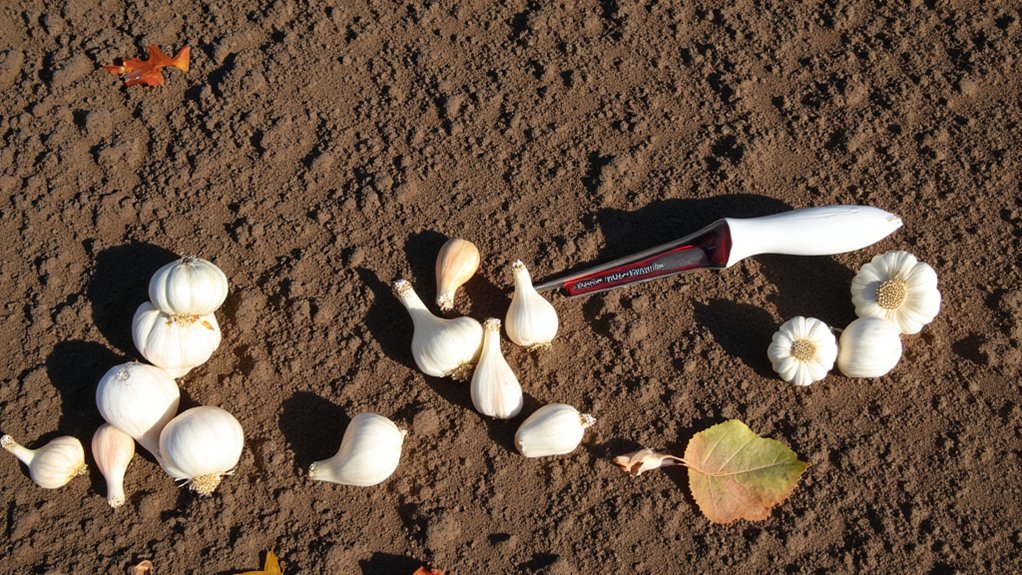
Let’s plunge into another clever trick with planting garlic bulbs to keep rodents out of your garden. You’ve probably got garlic in your kitchen, so why not use it outside? Rodents hate the strong smell, making it a natural deterrent.
Here’s how you do it: grab some garlic bulbs, break them into cloves, and plant them around your garden’s perimeter. Space them about 6 inches apart, 2 inches deep, in well-drained soil. Do this in early fall, around October, for best results before winter hits.
Keep an eye on the area; you’ll notice fewer rodent tracks over time. Water lightly every few days if the soil’s dry, but don’t overdo it. That’s it—simple, cheap, and effective for protecting your plants!
Applying Cayenne Pepper Powder
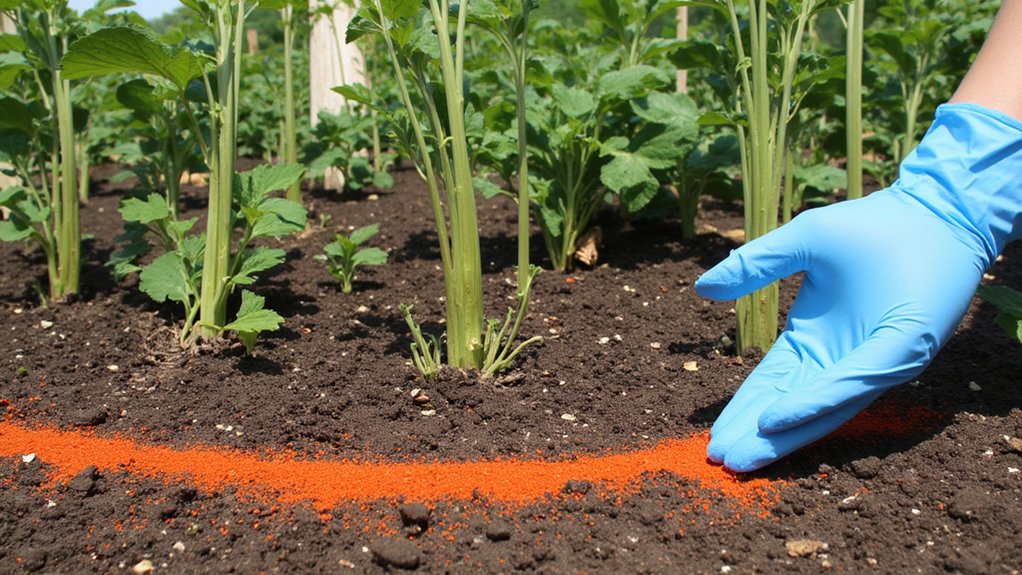
Ready for another rodent-repelling trick after trying garlic bulbs? Let’s talk cayenne pepper powder, a spicy little secret. It’s cheap, easy to find, and rodents hate the stuff.
Grab a small container of cayenne pepper powder from your local store, about 4 ounces should do. Sprinkle a thin layer, roughly a teaspoon per square foot, around your garden’s perimeter, especially near entry points. Focus on areas where you’ve spotted droppings or nibbles, as those are hot spots.
Reapply every week, or after heavy rain, since water washes it away. Wear gloves while handling it, though; you don’t want that burn on your skin. Keep it away from pets too, just to be safe. There you go, a fiery barrier!
Setting Humane Traps
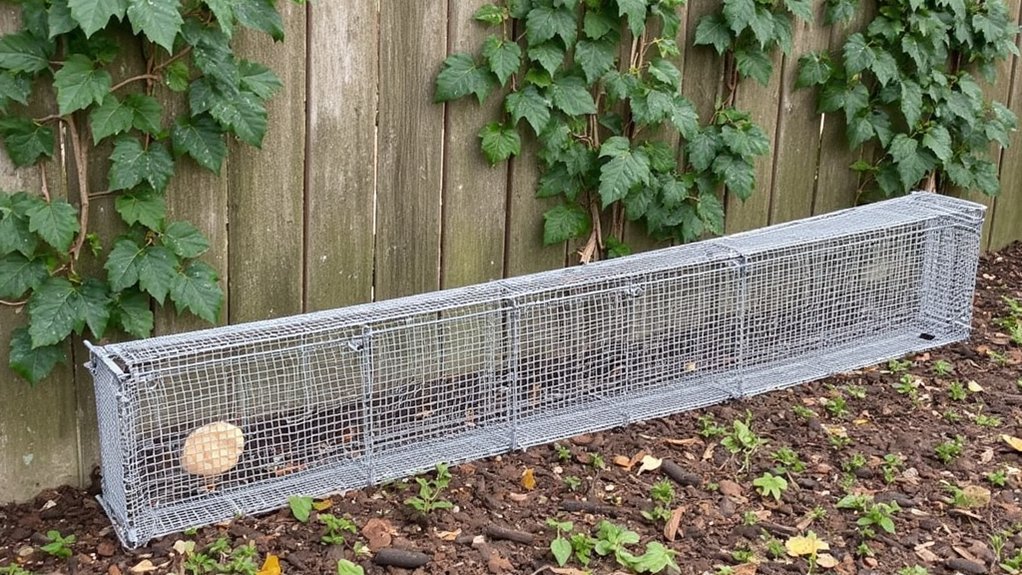
Another effective way to tackle those pesky rodents is by setting humane traps. You’ve gotta be smart about this, though. These traps catch critters without harming them, so you can release them far away.
Start by picking a live-catch trap, sized about 10x3x3 inches for mice or larger for rats. Place it near burrows or along walls, where rodents scurry most. Bait it with peanut butter—a tiny dab, no more than a teaspoon—smeared inside the trap’s end. Check it daily, ideally at dawn, since they’re active at night.
Once you’ve caught one, don’t just release it nearby. Drive at least a mile away, find a wooded spot, and let it go. That way, they won’t sneak back into your space.
Elevating Garden Beds
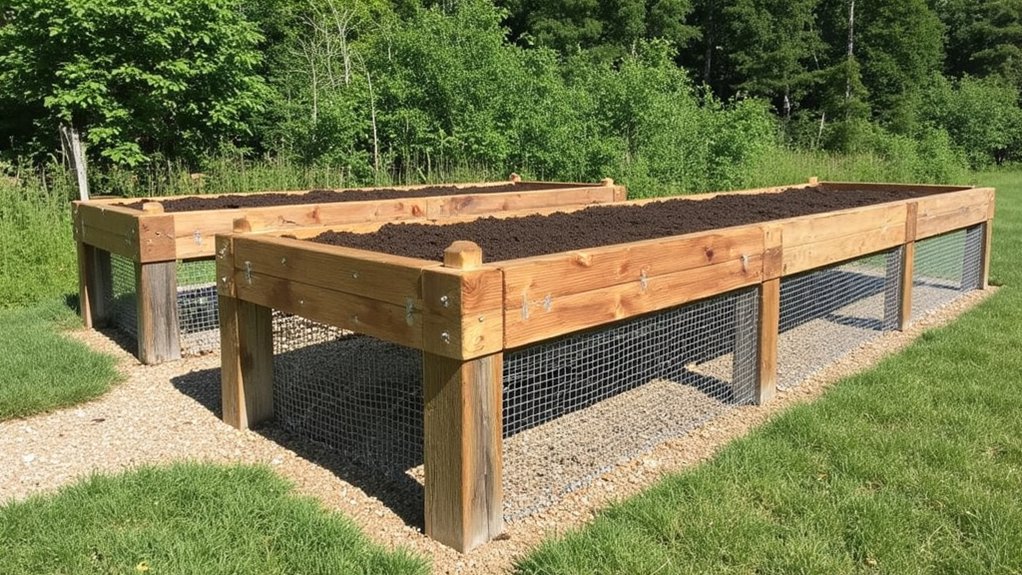
Elevating your garden beds offers a solid way to keep rodents from munching on your plants. It’s a simple trick, really, and it works by making it tougher for those pesky critters to climb up. You’re basically putting your veggies out of reach!
Start by building or buying raised beds at least 2 feet off the ground. Use sturdy materials like cedar or metal frames, and set them on a flat, stable surface. This height discourages most rodents, as they won’t bother scaling that high for a snack.
For extra protection, line the bottom with hardware cloth, about ¼-inch mesh, before adding soil. Check the structure monthly for wear or gaps, fixing any issues right away to keep those intruders out.
Using Ultrasonic Repellent Devices
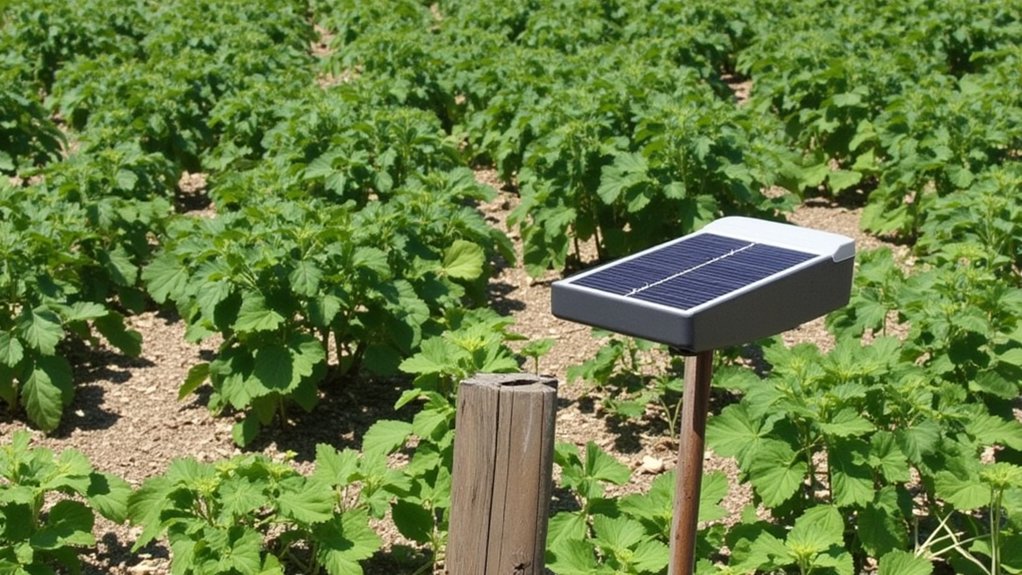
While elevating garden beds helps, you can also try using ultrasonic repellent devices to keep rodents at bay. These gadgets emit high-frequency sounds, inaudible to humans, that irritate pests like mice and rats. They’re a non-toxic option, so you won’t worry about harming pets or plants.
Place the devices around your garden, spacing them about 30 feet apart, to cover larger areas effectively. Make sure they’re at ground level, facing potential entry points, for the best results. Check the batteries or solar charge every two weeks; a dead device won’t help you.
Adding Predator Urine Deterrent

Try adding predator urine deterrent to your garden as a clever way to scare off rodents after exploring ultrasonic devices. It’s a sneaky trick, mimicking the scent of natural enemies like foxes or coyotes. You’ll find these products at most garden centers or online.
Start by identifying rodent hotspots, like near burrows or chewed plants, and apply the deterrent there. Use about 1-2 ounces per 100 square feet, following the package instructions for exact amounts. Reapply every 7-10 days, especially after rain, to keep the scent strong.
Place it strategically around garden edges or near entry points for best results. Wear gloves during application to avoid the smell on your hands. It’s a simple, effective step to protect your plants!
Securing Compost Bins
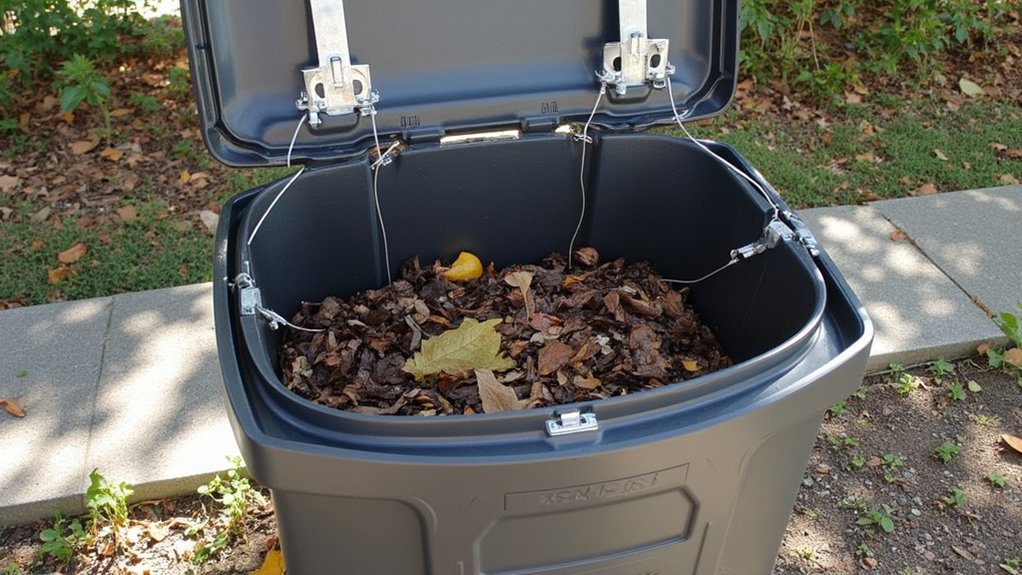
After tackling predator urine deterrents, let’s focus on securing your compost bins to keep rodents at bay. These bins can be a rodent magnet if you’re not careful. So, let’s lock them down tight.
First, get a bin with a sturdy, tight-fitting lid—metal or heavy-duty plastic works best. Make sure it’s at least 3 feet tall, as shorter bins are easier for rodents to climb. Secure the lid with bungee cords or heavy rocks, about 10 pounds each, to keep it sealed.
Next, place your bin on a hard surface, like concrete or paving stones, to stop rodents from burrowing underneath. Check it weekly for cracks or holes, and patch any damage with wire mesh. That’s how you’ll outsmart those sneaky critters!
Removing Food Sources
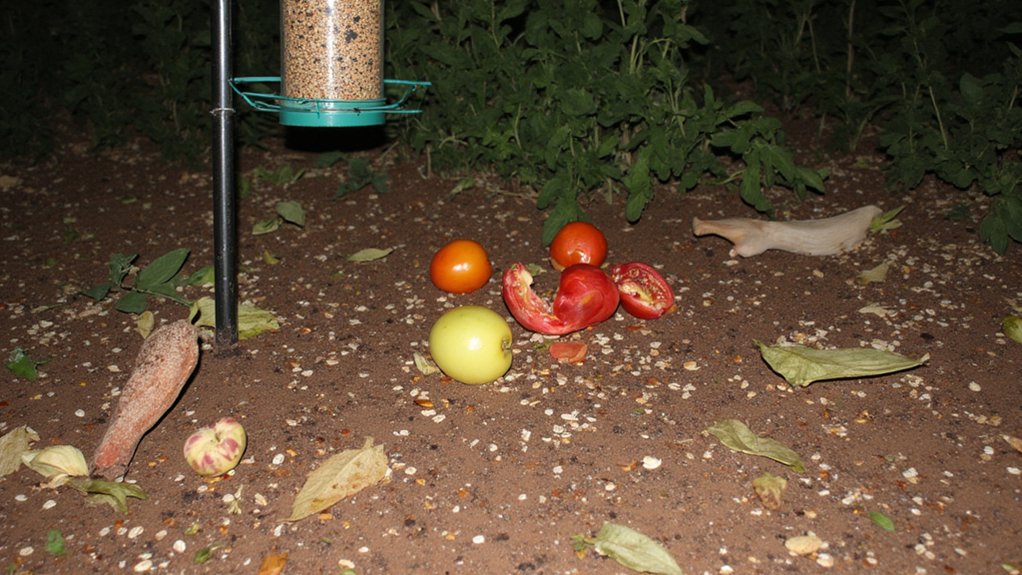
Let’s shift gears from securing compost bins to tackling another key step: removing food sources that attract rodents. You’ve gotta cut off their buffet, plain and simple. Start by clearing fallen fruit from trees daily, especially apples or peaches that hit the ground. Don’t let them sit overnight, as rodents feast after dark.
Next, check your garden for overripe vegetables—think tomatoes or zucchini past their prime. Harvest them immediately, or if they’re spoiled, bag them in sealed plastic and toss them in a rodent-proof bin. Also, store pet food indoors, not in sheds or garages. Keep it in airtight containers, ideally metal ones, holding at least 10 pounds. Finally, sweep up birdseed spills under feeders every evening, no exceptions.
